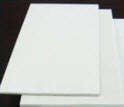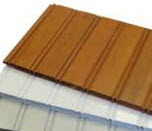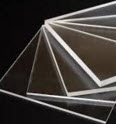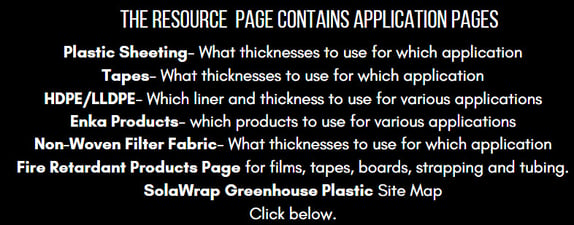Like any industry, when you work in that industry you come to understand what is mean by varying terminologies. Let's take a look at some common terms that are used in the plastic sheeting world to help clarify what is mean by each term.
Q: What is considered Hard Plastic Sheeting?

A: Hard plastic sheeting is plastic that for the most part won't bend. For example, corrugated plastic sheets, polycarbonate plastic, Acrylic sheets, UHMW-PE plastic boards (Ultra High Molecular Weight- Polyethylene, PTFE (Polytetrafluoroethylene) to name a few.
Q: Is 80 mil HDPE hard plastic?
A: HDPE as it get thick seems hard, but a better term would be rigid. It is surprising just how rigid thick HDPE actually is when you get it in your hands.
Q: What is meant by "plastic panels"?

A: Plastic panels are boards or panels made from plastic, and various types of plastic. Examples of plastic panels include- Plexiglas sheets, polycarbonate sheets, corrugated panels, etc.
Q: What is 6 mil plastic sheeting?
A: 6 mil plastic sheeting is referring to the thickness of generally flexible polyethylene film. 6 mil plastic sheeting can come in a wide variety of colors- for example- 6 mil black plastic sheeting, 6 mil white plastic sheeting and so on. It someone wants a film that is thicker and a bit stronger than 6 mil, they would ask for 8 mil plastic sheeting or 10 mil and so on.
Q: When is plastic sheeting for greenhouses used?
A: Plastic sheeting for greenhouses is used most of the time. It is the most economical way to create a roof of a greenhouse. Alternatives to plastic film for a greenhouse is making a Plexiglas greenhouse, or a glass greenhouse. While 6 mil plastic sheeting is used for greenhouses, today there are much stronger forms of plastic sheeting such as Solawrap greenhouse plastic. It too is a polyethylene film, but it has a layer of bubbles in the middle which vastly strengthen the film.
Q: What are acrylic sheets?

A: Acrylic sheets are hard plastic sheets that are used for a variety of things. What is referred to as "Plexiglas" and "Perspex" are brands of acrylic sheets. The subtle differences between acrylic and Plexiglas is that Plexiglas is harder than normal acrylic. It is also more chemical resistant than traditional acrylic. There are colored acrylic sheets. acrylic sheets that are used in aquariums and so on.
Q; Where can you buy plastic sheeting and hard plastic sheeting?
A: Global Plastic Sheeting is a company that sells mostly flexible plastic sheeting- but they do have corrugated sheets which are hard plastic. What differentiates Global Plastic Sheeting from big box stores is that they carry a very wide range of plastic sheeting in different mil thicknesses and made from different forms of polyethylene (HDPE, LDPE, LLDPE, etc). Plastic Sheeting from Home Depot is usually the thinner generic type of plastic sheeting.
Q: White Plastic Sheeting is What?
A: What is meant by white plastic sheeting is a polyethylene film that is white in color. It is also referred to as white poly sheeting. It comes in various mil thicknesses such as 10 mil white plastic sheeting. White plastic sheeting comes in rolls but can also come in white plastic panels. White plastic sheeting is quite common. You can find it on line at Global Plastic Sheeting, or big box stores such as Lowes.
With so many types of plastic sheeting to chose from- thick, flexible, rigid, fire retardant, anti-static, string reinforced and more, ask lots of questions and get the best option for your project.












